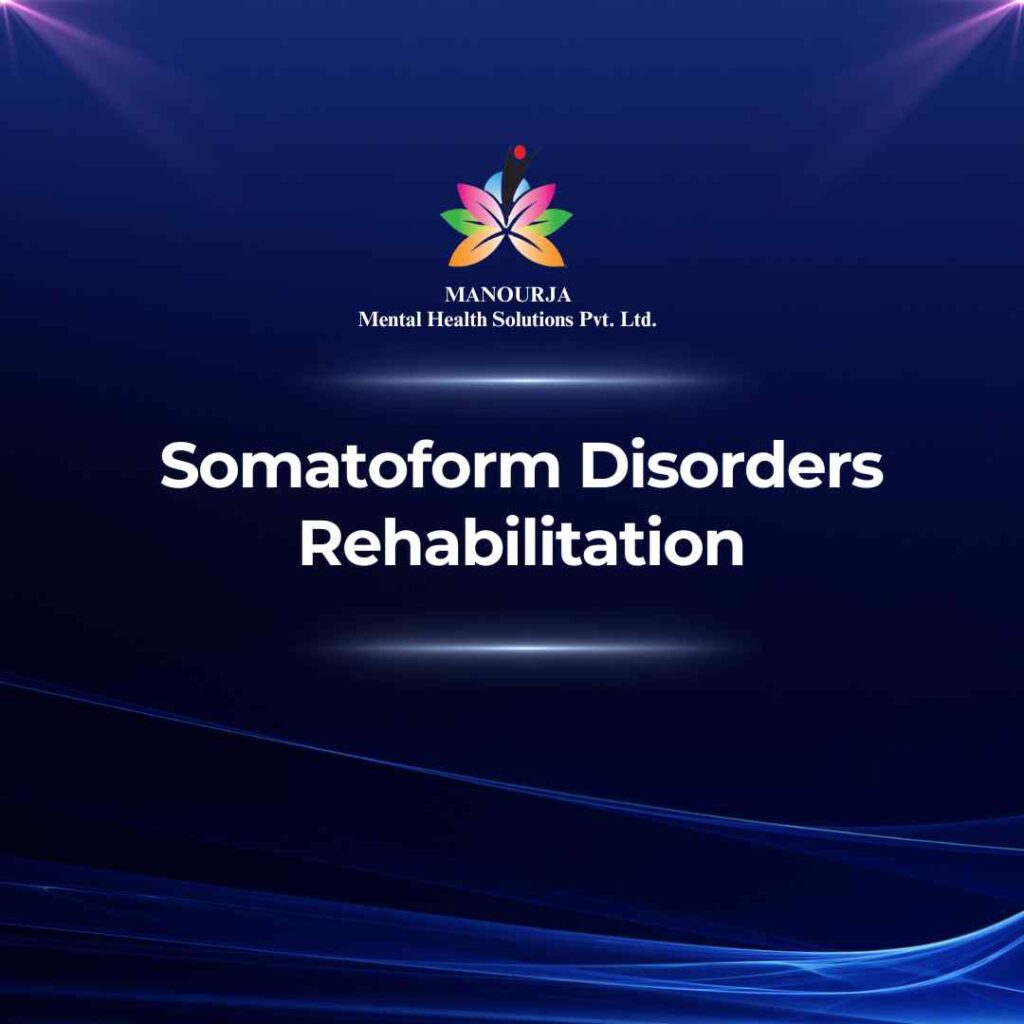Somatoform Disorders Rehabilitation

Somatoform Disorders, also known as Somatic Symptom Disorders, which involve experiencing physical symptoms that cause significant emotional distress and impairment, yet have no identifiable medical cause. These disorders require careful management through both outpatient and inpatient psychosocial rehabilitation settings depending on their severity and impact.
Signs and Symptoms of Somatoform Disorders
- Chronic Pain: Persistent pain in various parts of the body without clear medical cause.
- Neurological Symptoms: Such as headaches, movement disorders, or paralysis, again with no medical explanation.
- Gastrointestinal Complaints: Persistent digestive issues like nausea, diarrhea, or bloating without physical causes.
- Excessive Worry About Health: Preoccupation with the idea that one is seriously ill, based on the personal interpretation of bodily symptoms.
- Frequent Medical Visits: Often without finding relief or explanation, leading to frustration and increased anxiety.
Indicators for Outpatient Psychosocial Rehabilitation (OPD)
- Manageable Symptoms: Individuals who experience symptoms that are distressing but do not entirely prevent daily functioning might be suitable for outpatient care.
- Good Support Systems: Access to a supportive home or community environment that encourages adherence to treatment plans and strategies learned during therapy.
- Active Participation: Willingness and ability to attend regular therapy sessions and actively engage in therapeutic activities.
Indicators for Inpatient Psychosocial Rehabilitation (IPD)
- Severe Impairment: When symptoms are so debilitating that they prevent normal functioning, requiring intensive support and monitoring.
- Safety Concerns: Including risks associated with severe depression or anxiety, where constant care might be necessary.
- Ineffective Outpatient Treatment: If previous outpatient treatment has not adequately managed the symptoms, or the person has deteriorated, inpatient care may be considered.
Factors Influencing the Decision
- Intensity of Symptoms: The more intense and disabling the symptoms, the more likely inpatient care may be required.
- Psychological Factors: Presence of other psychological issues such as depression or severe anxiety can necessitate a more immersive treatment environment.
- Social Support: Availability and robustness of a support system can heavily influence whether outpatient care is sufficient.
Effective Psychosocial Rehabilitation for Somatoform Disorders
Psychosocial rehabilitation focuses on improving coping mechanisms, reducing the distress caused by symptoms, and helping individuals lead a more productive life.
Techniques and Approaches Used at MANOURJA
- Cognitive Behavioral Therapy (CBT): Aimed at changing negative thought patterns around health and symptoms, teaching better coping strategies for pain and stress.
- Psychoeducation: Helping individuals understand their symptoms and disorders, which can alleviate fears about undiagnosed medical conditions.
- Relaxation Techniques: Including guided imagery, progressive muscle relaxation, and mindfulness to help manage physical symptoms and stress.
- Group Therapy: Offers a community where individuals can share experiences and strategies, reducing feelings of isolation and misunderstanding.
- Behavioral Activation: Encourages activities that boost mood and combat the withdrawal and inactivity that often accompany chronic symptoms.
Steps in the Rehabilitation Process at MANOURJA
- Initial Comprehensive Evaluation: To assess symptoms, psychological health, and social factors impacting the individual.
- Customized Treatment Planning: Develop a tailored plan that addresses specific symptoms and overall mental health.
- Engagement in Therapy: Regular scheduled sessions incorporating individual and group therapy.
- Ongoing Assessment and Adjustments: Regular review of progress and adjustments to the therapy plan to ensure the best outcomes.
- Preparation for Discharge and Follow-Up: Planning for the transition out of care, ensuring ongoing support and strategies are in place.
“Embrace every day as a new opportunity to heal and grow.”
